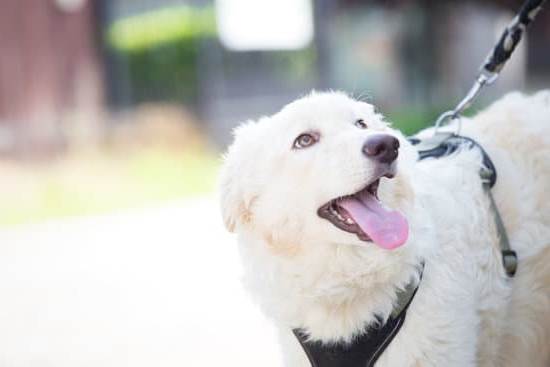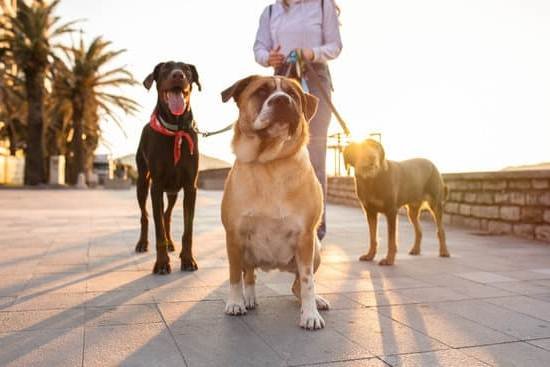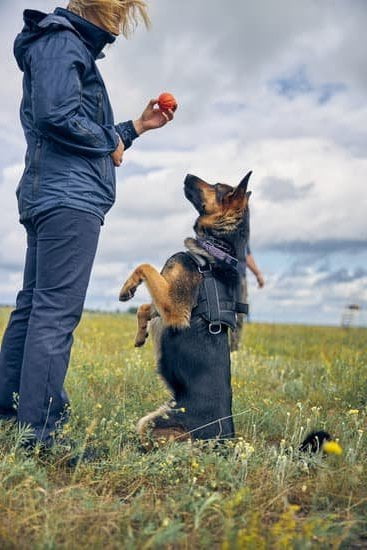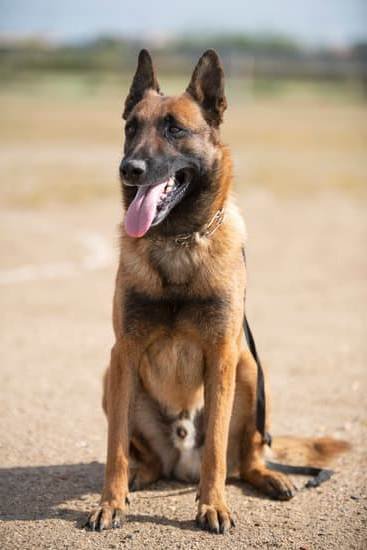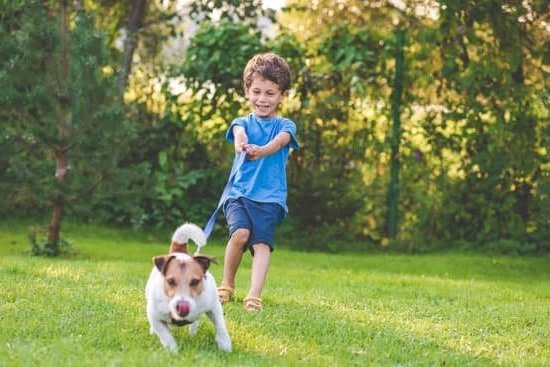Are you wondering how to potty train a dog on pee pads? Potty training is an essential part of a dog’s routine, and using pee pads can be a convenient option for both pet owners and their furry friends.
Understanding the importance of potty training for dogs is the first step in successfully teaching your pup where to go. In this article, we will explore the benefits of using pee pads for potty training, how to select the right type of pee pads for your dog, creating a designated potty area, the importance of consistency and routine, positive reinforcement techniques, addressing common challenges, troubleshooting tips, and when to transition from pee pads to outdoor potty training.
Potty training is not only beneficial for maintaining a clean and hygienic home environment but also promotes positive behavior in dogs. When done correctly, it can lead to a happier and healthier relationship between you and your pet.
Using pee pads as part of the training process has become increasingly popular among pet owners due to its convenience. Whether it’s due to living in an apartment or having busy schedules that make outdoor walks challenging at times, pee pads provide an indoor solution for dogs to relieve themselves while still maintaining cleanliness in the household.
It’s important to understand how to introduce this method effectively so that both you and your dog can benefit from its use.
Benefits of Using Pee Pads for Potty Training
Potty training a dog can be a challenging task, but using pee pads can make the process more manageable and convenient for both the owner and the pet. There are several benefits to using pee pads for potty training your dog:
- Convenience: Pee pads provide a designated spot for your dog to relieve themselves indoors, especially when you are unable to take them outside frequently.
- Indoor solution: For pet owners who live in apartments or houses without easy access to outdoor potty areas, pee pads offer a convenient solution for potty training.
- Weather conditions: In extreme weather conditions, such as heavy rain or snow, it may not be feasible to take your dog outside for potty breaks. Pee pads offer a reliable alternative during these times.
When selecting the right type of pee pad for your dog, there are several factors to consider:
- Absorbency: Look for pee pads with high absorbency to effectively contain urine and prevent leaks.
- Size: Choose the appropriate size of pee pad based on your dog’s breed and size to ensure sufficient coverage and protection of your floors.
- Odor control: Opt for pee pads with odor-neutralizing properties to maintain a fresh and clean environment in your home.
By understanding the benefits of using pee pads and selecting the right type for your dog, you can set the stage for successful potty training while minimizing accidents and messes in your home.
Selecting the Right Type of Pee Pads for Your Dog
When it comes to potty training your dog on pee pads, selecting the right type of pee pads is crucial for successful training. There are various options available in the market, and choosing the best one for your dog can make a significant difference in the training process. Here are some factors to consider when selecting pee pads for your dog:
- Size: It’s essential to choose the right size of pee pads that can accommodate your dog’s size and breed. Small pee pads may not be sufficient for larger breeds, leading to accidents and ineffective training.
- Absorbency: Look for pee pads with high absorbency to ensure that they can hold a significant amount of liquid, reducing the chances of leaks and messes in your home.
- Odor control: Opt for pee pads with odor-neutralizing properties to minimize unwanted smells in your home, creating a more pleasant environment for both you and your dog.
In addition to these factors, you may also want to consider eco-friendly options or washable/reusable pee pads for sustainability and cost-effectiveness. Taking the time to research and select the right type of pee pads will set a solid foundation for successful potty training.
Once you have selected the appropriate pee pads for your dog, it’s essential to place them in a designated potty area within your home. This will help create consistency and routine in your dog’s potty training journey, ultimately leading to successful results. Remember that patience, positive reinforcement, and clear communication with your pet are key elements in achieving effective potty training on pee pads.
Creating a Designated Potty Area for Your Dog
When potty training your dog on pee pads, it’s important to create a designated potty area to help them understand where they should go. This can be especially helpful for dogs who may struggle with generalizing the concept of going to the bathroom indoors. By choosing a specific spot in your home for the pee pads, you can guide your dog towards the correct area whenever they need to relieve themselves.
To create a designated potty area, choose a location in your home that is easily accessible to your dog, but also out of high-traffic areas. This could be a corner of a room or a discreet spot in the kitchen or bathroom.
Make sure the area is well-lit and has enough space for your dog to comfortably use the pee pad without feeling cramped. It’s also important to place the pee pads in an easily cleanable area, as accidents can happen during the training process.
In addition to choosing a specific location for the pee pads, consider using visual cues such as a mat or color-coded floor tiles to further signal to your dog that this is their designated potty area. Consistency is key when creating this designated space, and over time your dog will learn that this is where they should go when they need to use the bathroom indoors.
The Importance of Consistency and Routine in Potty Training
Consistency is key when it comes to potty training your dog on pee pads. Dogs thrive on routine, so establishing a consistent schedule for potty breaks is essential for successful training. By maintaining a regular routine, your dog will learn when and where they are expected to go potty, making the training process smoother and more effective.
Establishing a Potty Schedule
To achieve consistency in potty training, it’s important to establish a potty schedule for your dog. Take your dog to the designated potty area at specific times throughout the day, such as first thing in the morning, after meals, before bedtime, and every few hours in between.
Be sure to monitor your dog’s behavior and learn their cues for when they need to go potty. By sticking to a consistent schedule, you can help your dog develop good potty habits.
Using Verbal Cues
Consistency also applies to the verbal cues you use during potty training. When taking your dog to the pee pad, use a specific command or phrase such as “Go potty” or “Do your business.” Over time, your dog will associate these verbal cues with the action of going potty and will learn what is expected of them. Consistently using these cues will help reinforce the behavior you want from your dog.
Persistence and Patience
In addition to consistency and routine, persistence and patience are key components of successful potty training on pee pads. It’s important to remain patient with your dog as they learn this new behavior. Accidents are bound to happen during the training process, but it’s crucial not to scold or punish your dog for these mishaps.
Instead, continue providing positive reinforcement and stick to the established routine. With time and dedication, your dog will become accustomed to using pee pads for potty breaks.
Positive Reinforcement Techniques for Successful Potty Training
Positive reinforcement is a crucial aspect of successful potty training for dogs, especially when using pee pads. Dogs respond well to positive reinforcement, so it’s important to reward them when they use the pee pads correctly. One effective technique is to give your dog verbal praise and affection every time they use the pee pad. This helps them associate the act of using the pee pad with positive experiences, making them more likely to continue doing so.
In addition to verbal praise, it can be helpful to provide treats as a form of positive reinforcement. When your dog successfully uses the pee pad, give them a small treat to further reinforce this behavior. Make sure to choose treats that your dog loves and only give them as a reward for using the pee pad. This will help create a strong association between using the pee pad and receiving a reward.
Consistency is key when using positive reinforcement techniques for potty training on pee pads. Always make sure to offer praise and rewards immediately after your dog uses the pee pad correctly. This will help them understand that their behavior is being rewarded, which can expedite the potty training process. With patience and consistent positive reinforcement, you can effectively potty train your dog on pee pads and set them up for success in the future.
Addressing Common Potty Training Challenges and Solutions
Dealing With Accidents
Even with the most consistent training and positive reinforcement, accidents can still happen during the potty training process. It’s important to stay patient and remain calm when accidents occur. If you catch your dog in the act of going potty in the wrong area, interrupt them with a firm “No” and immediately guide them to their designated pee pad area. Avoid scolding or punishing your dog for accidents, as this can lead to fear and anxiety around potty training.
Dealing With Regression
It’s not uncommon for dogs to experience regression in their potty training habits, especially during periods of stress or change. If your dog starts having more accidents than usual, it’s important to evaluate any recent changes in their environment that could be contributing to this behavior. Patience and consistency are key when addressing regression in potty training. Revisit the basics of potty training and provide extra positive reinforcement when your dog successfully uses the pee pad.
Addressing Fear or Anxiety
Some dogs may develop fear or anxiety around using pee pads for potty training, especially if they have had negative experiences with other forms of potty training in the past. In these cases, it’s important to take a step back and reassess your training approach.
Provide plenty of encouragement, praise, and rewards for using the pee pads correctly, and be patient as your dog builds confidence in this new routine. If necessary, consult with a professional dog trainer for additional support in addressing fear or anxiety related to potty training on pee pads.
Troubleshooting Tips for Successful Potty Training on Pee Pads
Potty training a dog on pee pads can sometimes come with its own set of challenges. However, with the right approach and techniques, these challenges can be easily overcome. Here are some troubleshooting tips for successful potty training on pee pads to help you navigate through any potential issues.
One common challenge in potty training on pee pads is when a dog refuses to use the designated area. If your dog seems hesitant to use the pee pads, try placing them in different locations around the house to see if there is a preferred spot for your pet. Additionally, make sure the area where the pee pads are placed is easily accessible for your dog and that it feels comfortable using that space.
Another issue that may arise during potty training on pee pads is when accidents occur outside of the designated area. To address this, it’s important to closely monitor your dog’s behavior and signals indicating that it needs to eliminate. If you notice any signs such as circling or sniffing around, gently redirect your dog to the designated potty area on the pee pad. Consistent redirection will help reinforce the desired behavior.
Some dogs may also show resistance to using pee pads if they have been previously trained to go outdoors. In such cases, it’s essential to gradually transition them from outdoor potty training to using pee pads indoors. This can be achieved by gradually moving the outdoor potty area closer to the indoor designated spot with the pee pad until they are comfortable using it as their primary elimination area.
By being patient and employing these troubleshooting tips, you can successfully potty train your dog on pee pads and create a positive elimination routine that suits both you and your pet’s lifestyle. Remember that consistent reinforcement and positive encouragement play a crucial role in achieving effective potty training results.
When to Transition From Pee Pads to Outdoor Potty Training
As your dog becomes more accustomed to using pee pads for potty training, you may start wondering when it is the right time to transition to outdoor potty training. While pee pads can be a convenient and effective solution, eventually transitioning to outdoor potty training is important for your dog’s overall development and well-being.
One of the key signs that your dog is ready to transition from pee pads to outdoor potty training is when they consistently use the pee pads without accidents for an extended period of time. This indicates that they have developed a good understanding of where they are supposed to go potty and have established a routine.
Additionally, if your dog shows an increased interest in going outside or sniffs around specific spots before eliminating, it may be a sign that they are ready for outdoor potty training.
When transitioning to outdoor potty training, it is important to slowly introduce your dog to the new environment. Start by taking them out frequently, especially after meals and naps, and praise them enthusiastically when they eliminate outside. You can also consider gradually reducing the number of pee pads available indoors while increasing their exposure to outdoor potty opportunities.
Be patient during this transition period and continue using positive reinforcement techniques to encourage desired behavior. Remember that every dog is different, so the timing of this transition will vary based on your individual pet’s progress and readiness.
Conclusion
In conclusion, potty training a dog on pee pads can be a challenging but rewarding process. By understanding the importance of consistency, routine, and positive reinforcement, pet owners can successfully train their dogs to use pee pads for potty purposes.
Selecting the right type of pee pads and creating a designated potty area are crucial steps in the potty training process. It is important to remember that patience and persistence are key when dealing with any challenges that may arise during this training period.
Successfully potty training a dog on pee pads not only benefits the owner by keeping their home clean and odor-free, but also contributes to the overall health and well-being of the dog. It provides them with a safe and comfortable indoor option for relieving themselves, especially in instances where outdoor access may be limited.
Additionally, transitioning from pee pad training to outdoor potty training should be done gradually once the dog consistently demonstrates good behavior using the pee pads.
Finally, celebrating successful potty training milestones is important for both the pet owner and the dog. Whether it’s through verbal praise, treats or extra playtime, positive reinforcement helps solidify good potty habits in dogs. By following these tips and staying committed to the process, pet owners can enjoy a happy, healthy dog who has been successfully potty trained on pee pads.
Frequently Asked Questions
How Do I Train My Dog to Pee on a Pee Pad?
Training your dog to pee on a pee pad requires consistency and positive reinforcement. Start by placing the pee pad in a designated area and lead your dog to it after meals, naps, and playtime. When your dog uses the pad, reward them with treats and praise.
If they have an accident elsewhere, gently redirect them to the pee pad. With patience and repetition, your dog will learn to use the pee pad for peeing.
Do Pee Pads Work for Potty Training?
Pee pads can be effective for potty training, especially for puppies or senior dogs who may have difficulty holding their bladder. They provide a designated area for your dog to relieve themselves indoors, reducing accidents on carpets or floors.
However, success with pee pads depends on consistent training and supervision. Some dogs may also need additional reinforcement, such as scent attractants, to encourage them to use the pads.
How Do I Get My Dog to Use a Pee Pad Holder?
To get your dog to use a pee pad holder, introduce them gradually by placing the holder next to the pee pad they are already accustomed to using. Encourage your dog to step onto the holder while using the pad and reward them for doing so.
Over time, you can move the pee pad holder closer to where you want it permanently located in your home and continue reinforcing its use with treats and praise. This gradual transition will help your dog become comfortable using the new holder for their pee pads.

Welcome to the blog! I am a professional dog trainer and have been working with dogs for many years. In this blog, I will be discussing various topics related to dog training, including tips, tricks, and advice. I hope you find this information helpful and informative. Thanks for reading!

